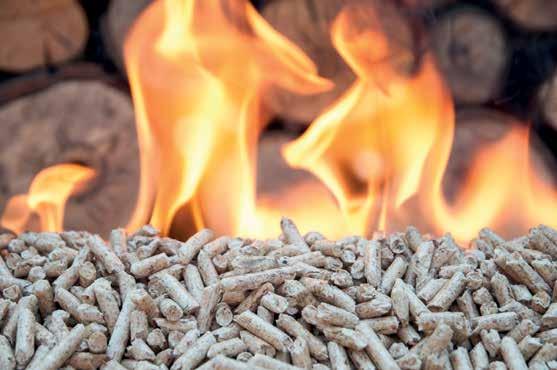
3 minute read
Are carbon accounting rules for biomass fit for purpose?
In this report, Richard Tipper of Ecometrica offers an accessible yet detailed picture of the biomass carbon accounting frameworks and their applications in UK and Europe, recommended for those interested in the sustainable use of bioenergy.
The use of biomass for energy is an important component of forest management. Historically, this has been the case and it is likely to be part of sustainable forest management into the future.
Sustainable bioenergy is one of the alternatives to fossil fuels in the shift towards a zero-carbon economy. Properly managed, biomass can be part of a sustainable, low carbon energy mix and healthy forest landscapes.
However, the development of bioenergy systems at scale has frequently been challenged in terms of its carbon benefits and externalities.
This report offers a comprehensive review of the carbon accounting methods currently in use for bioenergy. It draws on Ecometrica’s extensive track-record to explore evolving best practice in assessing emissions and impacts linked to the production and consumption of wood-based bioenergy and – in particular – biomass from forests, rather than material from agriculture, waste or shortrotation coppices.
International carbon accounting rules, where carbon removals and emissions are accounted for in the land sector, are well established and can be effective. These accounting rules provide a stable and internationally agreed foundation for the carbon accounting of biomass to ensure it delivers climate benefits.
This report aims to improve under-
SOME RECOMMENDATIONS
• Monitoring of wood-product markets to ensure the use of bioenergy complements the production of long-lived products, and does not cause the diversion of materials; • Development of an improved understanding of the potential carbon impacts of changes to bioenergy policies; • Work by the bioenergy sector with a broad range of stakeholders to develop a common understanding of the role bioenergy plays in forest management and ecosystem protection, not simply decarbonisation of the energy sector; • Strengthen policies and standards that encourage forest carbon management with an emphasis on soil carbon conservation; • Development of holistic policies across forestry and forest product sectors to support optimised carbon management, while ensuring the multiple non-carbon benefits of forests, including biodiversity and local communities are not compromised.
standing of the carbon accounting frameworks and sustainability criteria applied to biomass used for energy in the UK and Europe and identify areas for improvement.
The report concludes that the best way forward would be to build on existing UN and IPCC approved methods for forests and harvested products to ensure bioenergy delivers carbon benefits, rather than reinvent differentiated accounting frameworks for forest biomass.
Are carbon accounting rules for biomass fit for purpose?
Biomass Carbon Accounting Report written by Richard Tipper Ecometrica October 2021. Download the report here: https://ecometrica.com/ carbon-accounting-rulesfor-biomass-energy/
FREQUENTLY ASKED QUESTION
Would forests continue to accumulate carbon if they were left unharvested?
This depends on the type of forest and other factors such as soil, climate and elevation. There is evidence that many natural or semi-natural forests in the tropics and temperate regions could, if harvesting and thinning ceased, continue to sequester carbon in the soils over millennia, particularly in areas of high rainfall, where soil respiration is lower than the annual inputs from litter and deadwood. In these forests, the tree component of the ecosystem can be considered like a pump of carbon from the atmosphere into the soil8. However, many forests, in particular plantations and stands that have been planted with a view to wood production, are limited in terms of their sequestration potential as once they exceed certain heights or when they accumulate large loads of deadwood, they become prone to fire, windthrow and diseases.
In most production forest situations, managing for optimal carbon storage entails extraction of biomass (thinning) to reduce overcrowding, fuel load and focal points of disease or pests.
If forest harvesting was stopped in these production forests, they would continue to accumulate carbon for a while, but this would be followed by events resulting in large releases of CO2 from fires or oxidation of deadwood. Restricting the harvesting of existing production forests would also have a negative impact on the business case for establishment of new commercial woodland.










